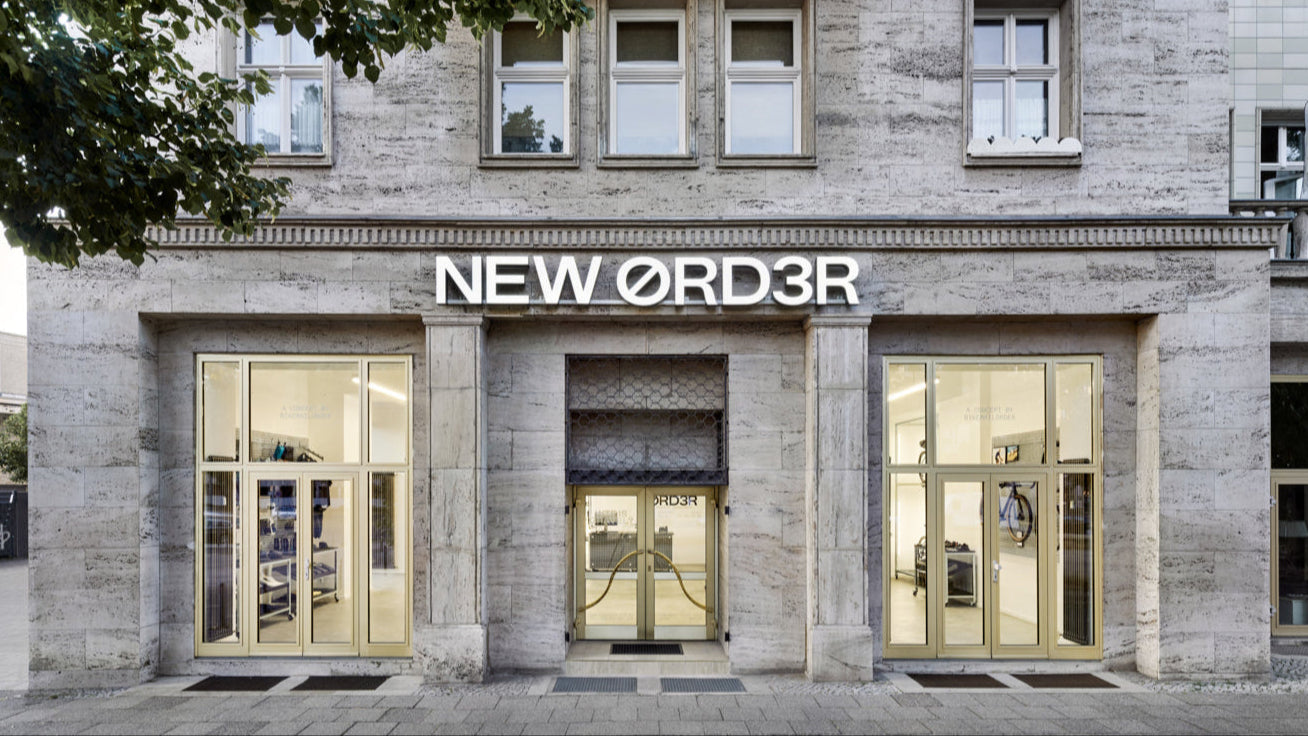Do you really feel safe when you're cycling in the city? Safety should not be an issue for cyclists in the city because the distances are short, there are street lamps everywhere, and cars are only allowed to drive at a maximum of 50 km/h. Moreover, most German cities now offer more or less well-developed bike paths. But does this really provide enough safety for people on bicycles?
Many cyclists do not feel safe in the city. But why is that?
Traffic is not as fast as on country roads outside the city, there is enough light almost everywhere to recognize obstacles, and there are more and more bike paths. Yet, bicycle accidents still occur daily in cities. One of the reasons for the lack of safety is the dense traffic. Urban streets are usually crowded, and the mix of cars, pedestrians, trams, bicycles, strollers, dogs, and so on often makes the situation unclear and complex. When poor visibility and wet or slippery conditions come into play, the safety for cyclists suffers additionally. According to statistics, more than 80,000 cyclists were involved in accidents in 2021 alone; children, teenagers, and seniors are particularly at risk.
|
Safety and bicycles are therefore a sensitive topic, especially in the city where it quickly becomes dangerous. Here are our 6 best tips to make cycling in the city safer. |

1. More safety on the bicycle through lateral visibility
Unfortunately, some cyclists still rely on street lighting and ride without any bicycle lights through the city. This is not only illegal but also negligent! Many bicycles today have very good lighting, and that is a good thing. But when it comes to bicycle lighting most bikers only think of the headlight in front and a red light at the back. For rural rides, this might make sense, but at intersections – and a city has plenty of those – you're often approached from the side by pedestrians, other cyclists, or cars to do and they see lamps poorly when they only shine forward and backward.
That's why your bike should definitely have the prescribed reflectors in the spokes or the also approved light strips around the tire.
|
For even more safety, everyone who travels a lot in the city should make sure that their bicycle lights shine laterally. |
Also daytime running lights, parking lights, and brake lights are no longer uncommon on bicycles today and are absolutely recommended even during the day, as they significantly increase safety.

Bicycle lights that are visible from the side significantly increase the safety for cyclists in the city! Image © Sigma Sport
💡Bicycle lighting for more safety in the city💡
Front bicycle light | Bicycle rear light | Bicycle lights battery | Reflectors
2. Visibility ensures safety on the bicycle!
When you're on the bicycle, you should absolutely not miss anything happening in the dense city traffic. And that's particularly difficult due to changing light conditions! Imagine you're cycling along a street: It's shady between the buildings, the bright sunlight blinds you on the cross street, it suddenly gets darker under a tree and you can't see anything for a moment... Constantly handling glasses on the bicycle distracts you from the road traffic. Especially if there are tram tracks in your city, you should always see what's ahead of you! How can you ensure more safety there?
We have three safe solutions ready for you:
- Choose a cycling glasses with lightly tinted lenses out. A light tint compensates for changing light conditions and thus protects your eyes.
- With some cycling glasses, you can change the lenses. This way, you can see through darker lenses on sunny days, while lightly tinted lenses are optimal for less bright days.
- Wear a city helmet with a foldable visor, so you can adjust your field of vision to the light with a single hand movement.
|
Our tip: Clear cycling glasses also help if your eyes tear up while cycling. With teary eyes, you can't see anything, a clear pair of glasses blocks the wind and ensures good visibility. Even in the rain, clear glasses improve visibility. |

A bicycle helmet with a visor is a fine thing! The lightly tinted visor compensates for changing light, so you don't miss anything, and this makes cycling in the city much safer! Image © Lumos
3. A heavy bag becomes a safety risk on the bicycle
Many people who cycle through the city carry a lot with them. You can of course transport work documents or shopping on the bike, but there is one thing you should keep in mind: Your luggage must always be well secured!
|
In the city, you need all your attention on the road, so you should absolutely avoid distractions. This also includes ensuring that your luggage is securely stowed. |
You must not lose anything, because what falls off is usually run over by the next car in seconds! On the other hand, you also don't want anything to be stolen. Everything should be packed theft-proof!
Good panniers, a bicycle basket plus a tension strap or a backpack are safe transport options. Many city bikes also have a stylish front basket, but it should be used with caution! The heavier you pack it, the more it can change the handling of the bike and even influence the riding path!
Bags & baskets for safe transport on the bicycle
Panniers | Backpacks | Bicycle Baskets
Choose the RIGHT Messenger Bag for Cycling!
The more sporty your position on the bike, the more problematic it becomes to carry a messenger bag. Those who sit completely upright on a city bike or Dutch bike have nothing to fear here, but messenger bags are not suitable for a bent seating position. The heavier the bag becomes, the greater the force with which it eventually slides from your back to the side. The sliding bag is annoying, distracts you, and can even take you off the straight path.
If you want to cycle with a messenger bag, it should definitely be one designed for cyclists. These bags have an additional strap that prevents slipping, so your bag won't take you off course!

A bicycle bag/messenger bag is a safe solution for transport on the bike. Image © Chrome Industries
4. The Safety Check for the Bike
We don't want to imply that you neglect your bike. But from experience, performance bikes like racing bikes, trekking bikes, or MTBs are more likely to be kept in shape than the old clunker for the 4km through the city to the office. And that eventually takes its toll!
- Poorly functioning brakes are really dangerous! You should keep an eye on the wear on the brake pads or brake rubbers and replace them in time! Also, brake discs wear out and need to be replaced eventually.
- Equally important are fit tires. Worn-out tires have no grip left. This means you can't take corners safely, it gets slippery on wet roads, and you can't brake reliably. There are all-weather tires that you can use year-round in cities with moderate climates. For cities where a lot of ice and snow are expected, we recommend equipping the bike with winter tires for the winter.
- You should also regularly check the tire pressure. Many cyclists struggle with nearly flat tires, which unnecessarily costs energy! But not only that—if the tires have very little air, the bike may ride unstably in the worst case.
|
We strongly recommend an annual comprehensive safety check for you! |
↪Bicycle parts for more safety on the city bike ↩
Brake pads | Brake rubbers | Tires | Winter tires | Pumps
5. High-Vis is in!
An urban Look in muted colors is nice and all, but unfortunately, you are not safe on the road with it. If you want to ride through the city by bike, you should fully embrace your love for bright colors because the more vibrant the outfit, the better you'll be seen. Red, yellow, or bright green, the more colorful, the better! Neon colors stand out particularly well, but at least your outerwear should be bright.
Our tip: Nowadays, there is cycling clothing that doesn't look any different from regular casual wear or even office attire. However, it is cut for cyclists and is therefore particularly comfortable in the saddle. Cycling jackets and -pants are often equipped with reflective elements. This makes you particularly visible at night, at dusk, or in bad weather, which is important for your safety!

Play it safer and wear a jacket that lights up completely in the headlights! Image © Assos
6. Traffic safety is crucial!
If you are riding your bike in the city, a roadworthy bicycle is an absolute prerequisite! The mandatory equipment includes not only the bicycle lights described above, but your bike should also have other safety-relevant components!
What makes your bike roadworthy:
- Bicycle lighting, approved according to StVZO
- Reflectors white in front, red in the back
- Side-visible reflectors on the wheels
- A bicycle bell
- Two brakes
- Non-slip, securely fastened pedals with yellow reflectors
In the Bike Blog, there is a post that explains the necessary equipment in great detail. It is really worth reading this article and upgrading the bike accordingly, because without these bike parts, not only safety suffers, but you also risk trouble up to fines!
Bike Safety for Advanced
We don't want to elaborate on one tip at this point because it goes without saying that "topless" doesn't work at all! The bike helmet is and remains the most important safety measure.
However, there are some situations where a few simple measures can significantly improve safety.
How to get to work well by bike is explained in our article "Cycling to Work".
"Better with the bike to work" – read now.
The winter is a special challenge for bike and rider. How to safely get through the cold season can be learned in various articles. We highlight the meaning of winter tires, explain which accessories make cycling safer in winter and "winter cycling clothing" is also an important point.
- Winter cycling clothing
- Does your bike need winter tires?
- Cycling through winter
- Cleaning the bike in winter
Also important: More safety for the beloved bike! How to do that, you will learn in our article "Locking the bike properly".
Title image © Metehan Demirkaya on Pexels





